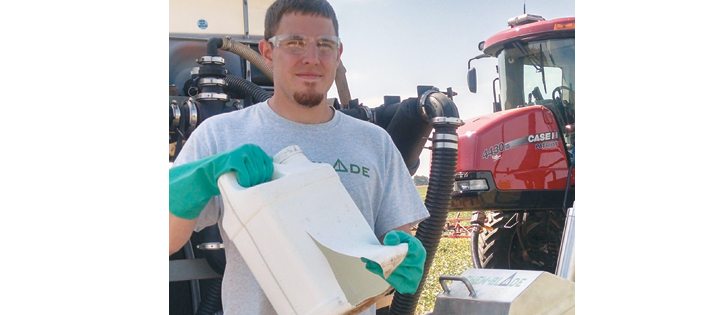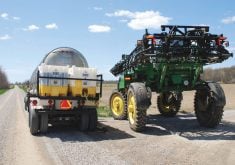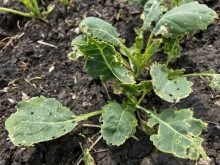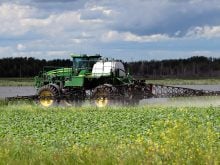Pesticide jugs Service seeks to increase number of chemical containers that are disposed of properly
FARGO, N.D. —Last year, a Kansas company asked 175 farmers about their farm’s jug handling programs and was surprised by the response: they had no programs.
“Over 90 percent of the guys admit to throwing unrinsed jugs into the back of their pickup,” said Ralph Lagergren.
“Plus, nearly 95 percent of farmers we surveyed said they either burned or buried the jugs once they sat around in the yard long enough.”
Lagergren said each jug still holds two to three ounces of pesticide.
The survey results prompted the question: would farmers take better care of their empty chemical containers if they could dump, rinse and shred each one in less than a minute.
Read Also
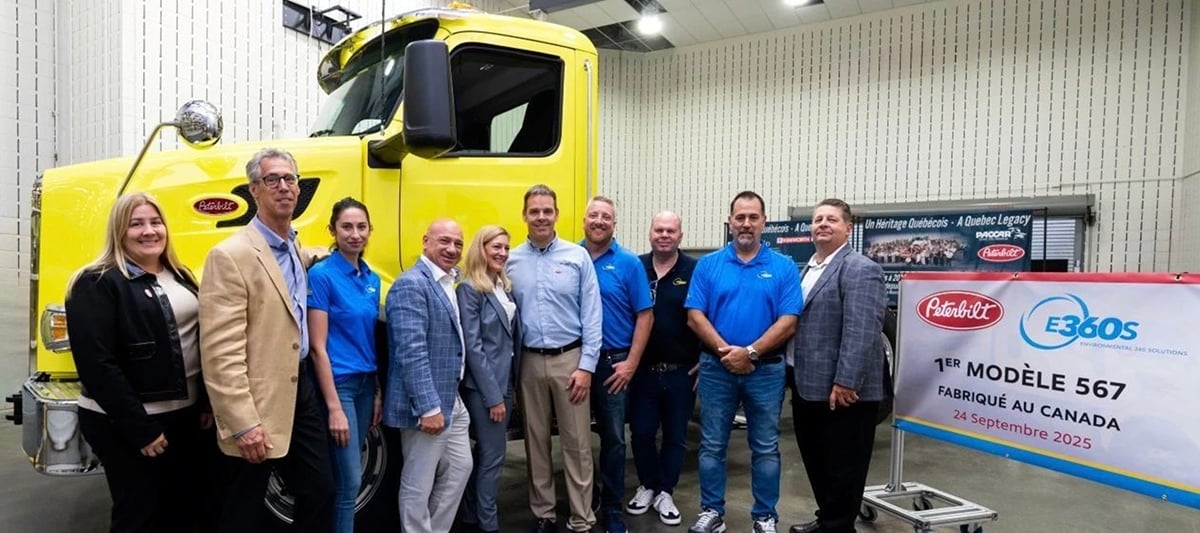
Equipment manufacturing may return to Canada
Some ag equipment and automotive manufacturers are now adjusting their production and distribution to avoid tariff costs in relation to supplying the Canadian market.
Lagergren said every farmer knows about triple rinsing and environmental impacts, but the job at hand is to spray. When the pressure’s on, it’s just too easy to say they’ll rinse the jugs later.
“Then when you get back to the shop, of course you’re greeted by this growing mountain of jugs from previous spray jobs,” he said.
“So you just know that nobody is going to find time to start rinsing all those containers.”
Lagergren is a partner in Chem-Blade, a new line of equipment for rapidly dumping and rinsing chemical jugs. Manufactured by Eck Fabrication in south-central Kansas, Chem-Blade products focus on faster container handling that’s also safer for operators and the environment.
He said racing the clock is part of spraying season. It’s a small window with too many acres to be covered in too short of time. Improving the jug handling process is probably the least expensive way to speed up field operations.
Lagergren said the John Deere website urges farmers to buy a new sprayer because the booms fold 15 seconds faster than they did on previous models. He said a Chem-Blade handler can save far more time than that with an investment of less than $5,000.
The Chem-Blade concept of rapid jug handling came from Ethan Eck, a 23-year-old Kansas farmer and inventor who wanted to streamline the process. Eck now has nearly a dozen container-related patents to his name.
Lagergren partnered with Eck to help with the business aspect of the project.
“When we did the survey, the other surprise we found is that most farmers are still pouring from the jug,” he said.
“The wind’s blowing back splash all over them. They’re in too much of a hurry to put on the full protective gear. Weather’s moving in. But that’s the real world we live in. It’s all about time. The biggest thing you can do for a farmer during spraying season is to save him time and make his chemical handling safer. The Chem-Blade accomplishes both objectives.”
Eck’s first foray into the jug busting business was a three-blade unit that can be quickly installed in a conventional poly round handler bucket.
Instead of pushing the flaps up against the wall of the jug where they trap chemical, Eck designed his first Chem-Blade to pull the flaps to the outside so the rotary nozzle gives the jug a total rinse inside and out.
Eck said he puts a rotary nozzle in all Chem-Blade units because they do a better job of squirting rinse water into every nook and cranny where the chemical may be clinging. The flaps pull outward when the jug is pulled up so that everything drains down.
“Some systems on the market have four blades, but Ethan felt that required too much force to jam the jug down, so his first Chem-Blade uses just three blades,” Lagergren said.
“The support bars on four-blade systems push the flaps toward the inside. That’s why they trap so much chemical.”
The basic three-blade manually operated Chem-Blade is designed as a retrofit for existing handling systems. It sells for US $495, including the rotary rinse nozzle.
Eck’s next big step was the two-blade handler, which punches a small V-hole through the bottom of the jug and then slices up the side of the jug to cut a big exit door for the liquid.
“It’s instantaneous,” Lagergren said.
“Product just gushes down. The jug is empty before the door is completely sliced open. The rinse nozzle turns on automatically, and that’s that, it’s all over with. The latest upgrade is to totally enclose the mechanism so there’s absolutely no fumes or droplets flying around the person. We call it the ES model, for enclosed system. Once you close the lid, it’s completely sealed. Push the button and the air ram does everything for you.”
The ES can be used as an eductor on sprayers, as an inductor at supply stations or integrated into an existing loading system. The ES will sell for about $4,000.
Lagergren said customers report that the different Chem-Blade handlers also work on bagged products.
“Drop the bag down on the blades, it gets cut open and emptied immediately, the nozzle rinses it out, and you pull it out.
“There’s no need to stand there with your knife out or stand there pouring.”
The final step in the process is the Chem-Blade shredder, which reduces containers to tiny strips of clean plastic that can be easily bagged, transported and recycled.
“I think Ethan came along with his ideas at just about the right time,” he said.
“The EPA (U.S. Environmental Protection Agency) is right now looking at strengthening their 20-year old standards aimed at protecting farm workers. The new rules will be a lot tighter.”
For more information, call Eck at 620-491-0461 or visit www.chemblade.com.


